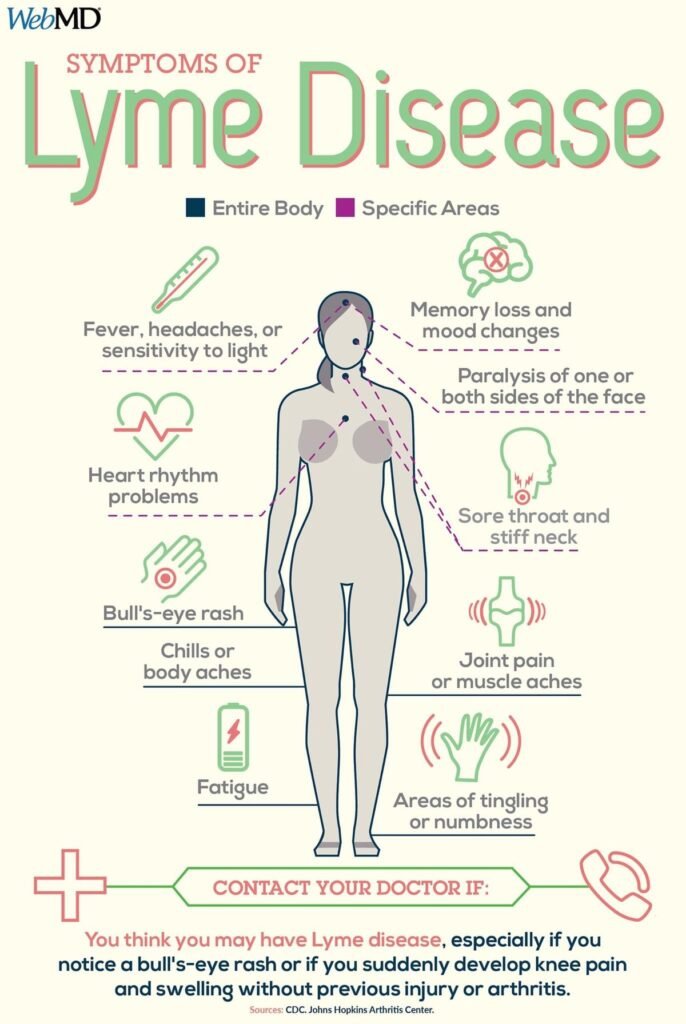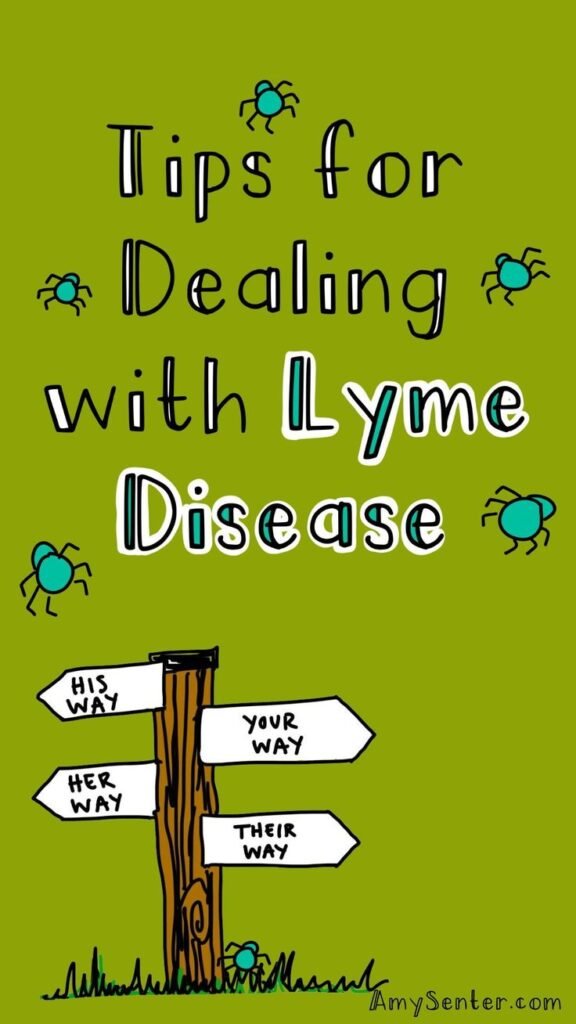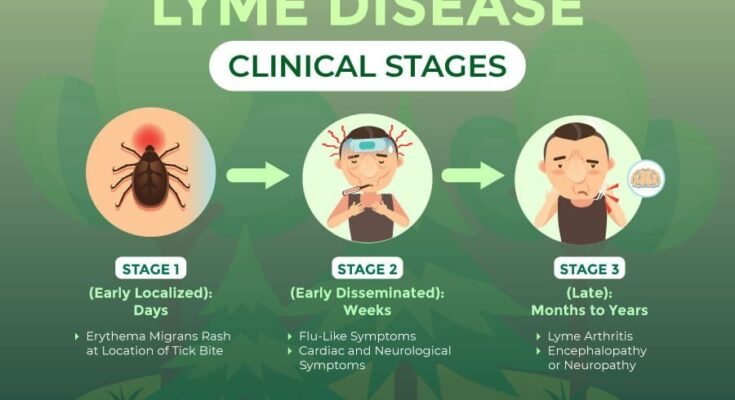Report About Lyme Disease is an emerging public health threat, with more cases reported in temperate regions of North America, Europe, and parts of Asia. The cause of Lyme disease is a tick-borne illness, transmitted to humans by an infected black-legged tick (also called a deer tick). The bacterium (Borrelia burgdorferi) that causes Lyme disease is transmitted to the tick while it feeds on infected animals like deer or mice. Not every tick bite will transfer Lyme disease to a human. The scientific literature suggests that a tick needs to be attached for 36-48 hours for transmission of the bacteria.
What Causes Lyme Disease?
Lyme disease is transmitted to humans through the bite of the infected tick. The tick is infected after a blood meal from an infected host, such as a deer or mouse. Most tick bites will NOT give you Lyme disease. According to the literature, the tick must be attached for 36-48 hours before the bacteria are transmitted.
Symptoms of Lyme Disease

Lyme Disease is often called the “great imitator” because many of its symptoms reflect those of other illnesses. Lyme Disease has three stages of progression:
Early Localized Stage (3 to 30 days after being bitten):
- Erythema migrans: A circular, red “bull’s-eye” rash at the bite site (in roughly 70-80% of cases)
- Fever, chills
- Fatigue
- Headache
- Muscle and joint aches
- Swollen lymph nodes
Early Disseminated Stage (weeks to months later):
Additional rashes on different areas
Facial palsy (loss of muscle tone in the face)
Pain and swelling in large joints (especially knees)
Symptoms of meningitis (eg. severe headaches, neck stiffness)
Irregular heart beat (Lyme carditis)
Late Stage (months to years later):
- Chronic arthritis
- Severe joint pain, and swelling
- Neurological issues such as memory problems, numbness and sleep disturbances
Diagnosis and Testing
- Lyme disease can be difficult to diagnose, especially if no rash is present, and diagnosing involves:
- Review of medical history and coherence of symptoms
- Possible exposure to tick environments
- Blood tests: enzyme-linked immunosorbent assay (ELISA) or western blot for positive confirmation of diagnosis
Treatment Options

Most cases of Lyme disease will be treated with oral antibiotics, especially when it is identified early. Examples of oral antibiotics are:
Doxycycline (first-line for adults and older children)
Amoxicillin or Cefuroxime (for younger children and pregnant women)
Severe or chronic cases may require intravenous antibiotics and longer courses of antibiotics. Most people recover fully but have some patients experience ongoing symptoms; Post-Treatment Lyme Disease Syndrome (PTLDS).
Global Implications
Lyme disease does not reside in a single area. It is truly a global concern. The CDC in the United States advises that there are more than 470,000 diagnoses every year and increasing numbers in Canada and Europe. Health organizations, (retailers, agriculture, and governmental), are advocating for awareness, surveillance, and funding for research.
Final Thoughts
Lyme disease is modifiable and preventable. Precautionary measures can mitigate the health impacts of this disease. If you participate in activities in landscapes or environments where ticks are present and then exhibit signs and symptoms, it is important to seek medical attention as soon as possible where positive outcomes could occur.
